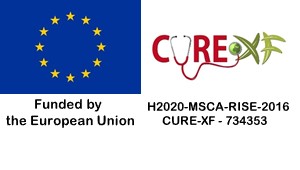Morocco belongs to the countries ranked at a high-risk level for entry, establishment, and spread of Xylella fastidiosa, which has recently re-emerged as a plant pathogen of global impor- tance causing olive quick decline syndrome (OQDS).
Symptomatic infection by X. fastidiosa leads to devastating diseases and important economic losses. To prevent such losses and damages, countries without current outbreaks like Morocco need to first understand their host plant responses to X. fastidiosa.
The assessment of the macro and micro-elements content (ionome) in leaves can give basic and useful information along with being a powerful tool for the sustainable management of diseases caused by this devastating pathogen. Herein, we compare the leaf ionome of four important autochthonous Moroccan olive cultivars (‘Picholine Marocaine’, ‘Haouzia’, ‘Menara’, and ‘Meslalla’), and eight Mediterranean varieties introduced in Morocco (‘Arbequina’, ‘Arbosana’, ‘Leccino’, ‘Ogliarola salentina’, ‘Cellina di Nardo’, ‘Frantoio’, ‘Leucocarpa’, and ‘Picholine de Langue-doc’), to develop hypotheses related to the resistance or susceptibility of the Moroccan olive trees to X. fastidiosa infection. Leaf ionomes, mainly Ca, Cu, Fe, Mg, Mn, Na, Zn, and P, were determined using inductively coupled plasma optical emission spectroscopy (ICP-OES).
These varieties were also screened for their total phenolics and flavonoids content. Data were then involved in a comparative scheme to determine the plasticity of the pathogen. Our results showed that the varieties ‘Leccino’, ’Arbosana’, ‘Arbequina’ consistently contained higher Mn, Cu, and Zn and lower Ca and Na levels compared with the higher pathogen-sensitive ‘Ogliarola salentina’ and ‘Cellina di Nardò’. Our findings suggest that ‘Arbozana’, ‘Arbiquina’, ‘Menara’, and ‘Haouzia’ may tolerate the infection by X. fastidiosa to varying degrees, provides additional support for ‘Leccino’ having resistance to X. fastidiosa, and suggests that both ‘Ogliarola salentina’ and ‘Cellina di Nardö’ are likely sensitive to X. fastidiosa infection.
